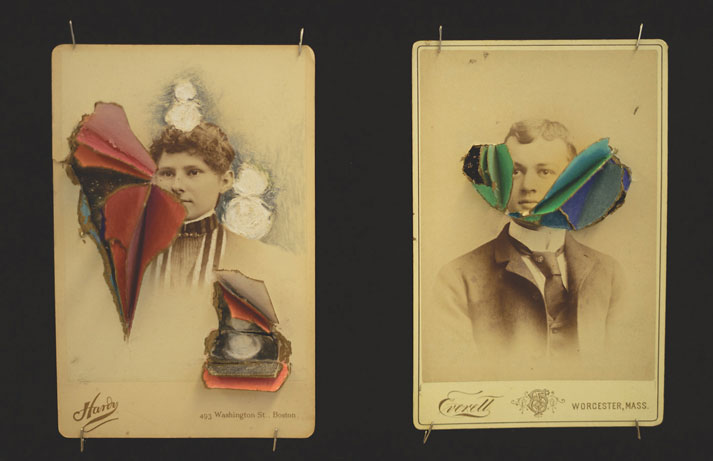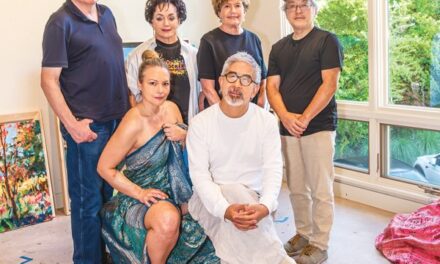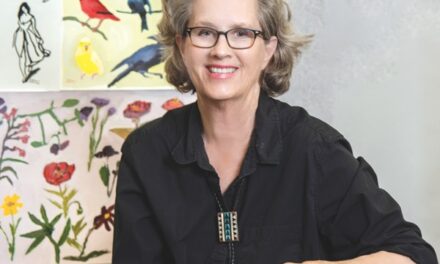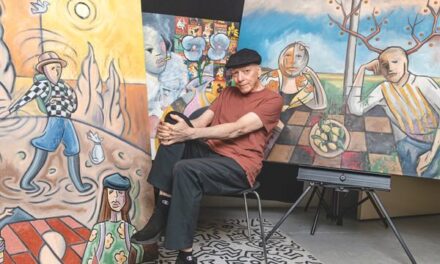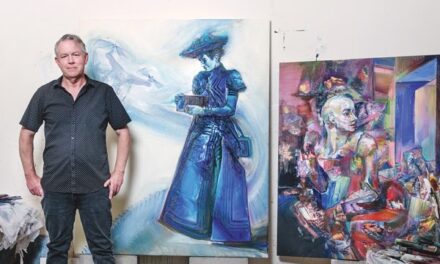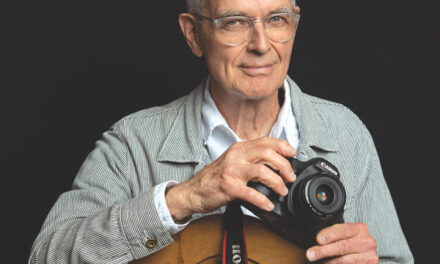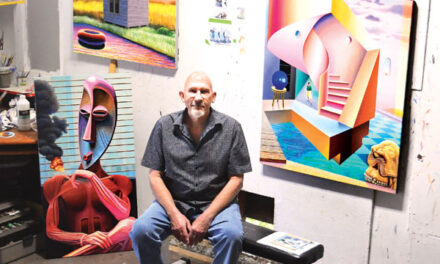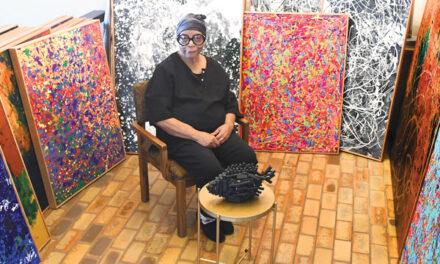Jessica Wimbley is “busy in the best of ways—the way you dream you could be as an artist.”
As an interdisciplinary artist and curator, Wimbley works on multiple projects, from billboards and video installations to collages and portraits.
“I don’t see an artist as solely fixed to working in a specific medium and producing fine art objects,” says Wimbley, who lives in Midtown and holds degrees in painting, visual arts and arts management.
“Being a contemporary artist, I’m constantly learning and finding ways art can bridge different discussions, communities, people and ways of thinking,” she says.
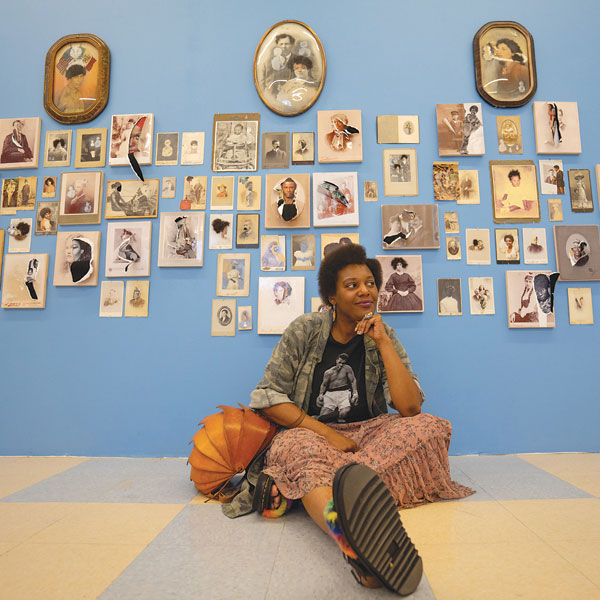
Wimbley was exposed to art early. Her parents owned one of the nation’s top-10 Black-owned ad agencies. She credits conversations around the dinner table in Illinois as a big influence on her artistic development. Plus, she had “access to art education consistently throughout childhood.”
Her first job after graduate school landed her in Southern California working for a commercial gallery. The experience opened her eyes to the less savory realities of the art world.
She decided to study arts management, saying, “I wanted to know, why are things functioning this way? Is it systemic? What interventions can be made to make spaces more equitable and a place where people feel they can belong?”
She worked at Pomona College Museum of Art in community outreach and program development. The job was enjoyable, but Wimbley saw room for improvement.
“I was the first Black person to work (at the museum),” she says. “People don’t realize we’re still dealing with firsts. These institutions are still very entrenched in the apartheid model. They have a super diverse student population and a homogeneous, all-white faculty. It’s a real problem in California in many institutions that we need to address.”
She encountered inequities as an adjunct teacher at community colleges and decided to leave academia and find collaboration and belonging elsewhere. She moved to Sacramento in 2018.
When the pandemic hit, Wimbley created a video titled “Masking” that she projected on her neighbor’s house as public art.
The video was shared on social media and caught the attention of the Social Justice Billboard Project. The group commissioned her to create a billboard in collaboration with the NE (Northeast) Sculpture Gallery Factory in Minneapolis at the site of George Floyd’s murder.
Next came Sacramento’s “Your Actions Save Lives,” a COVID-19 awareness art campaign. Wimbley’s large-scale video “Masking 2021” was displayed at Arden Fair Mall, on an Oak Park billboard and in media around California.
Since then, Wimbley has been busy. She’s working on several video series and an ongoing curatorial project series with her husband, Chris Christion, called “Biomythography,” a term borrowed from poet Audre Lorde to describe the exploration of identity, history and representation.
Wimbley was one of five local artists selected last November to do community engagement through the city’s Capital Creative Corps program. She teaches writing to seniors at Hart Senior Center and helps the Sacramento Public Library archive the work.
As a separate gig, she works on arts engagement with Twin Rivers Unified School District seventh graders, many of whom have never visited an art museum.
“Working with Twin Rivers and the city has been so complementary,” she says. “I’m proud of our city and the people who work here. I love being fully engaged in all the ways you can work in the arts. I enjoy being able to move between different spaces. There are so many opportunities here for arts integration.”
For information, visit jessicawimbley.com.
Jessica Laskey can be reached at jessrlaskey@gmail.com. Follow us on Facebook and Instagram: @insidesacramento.





